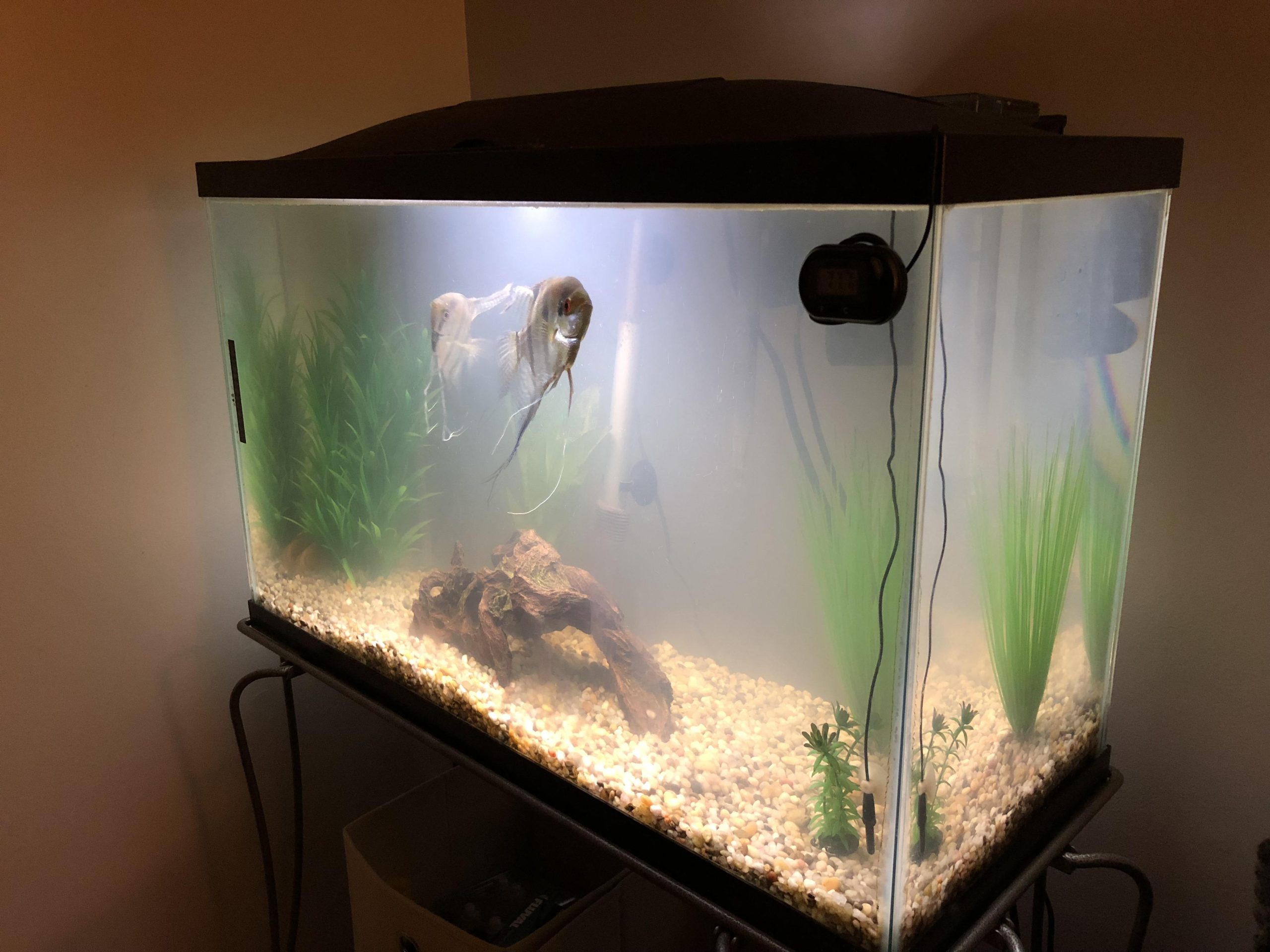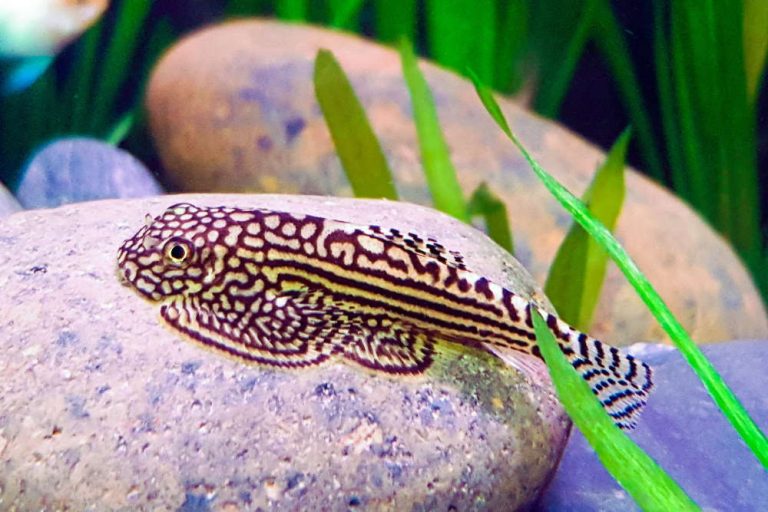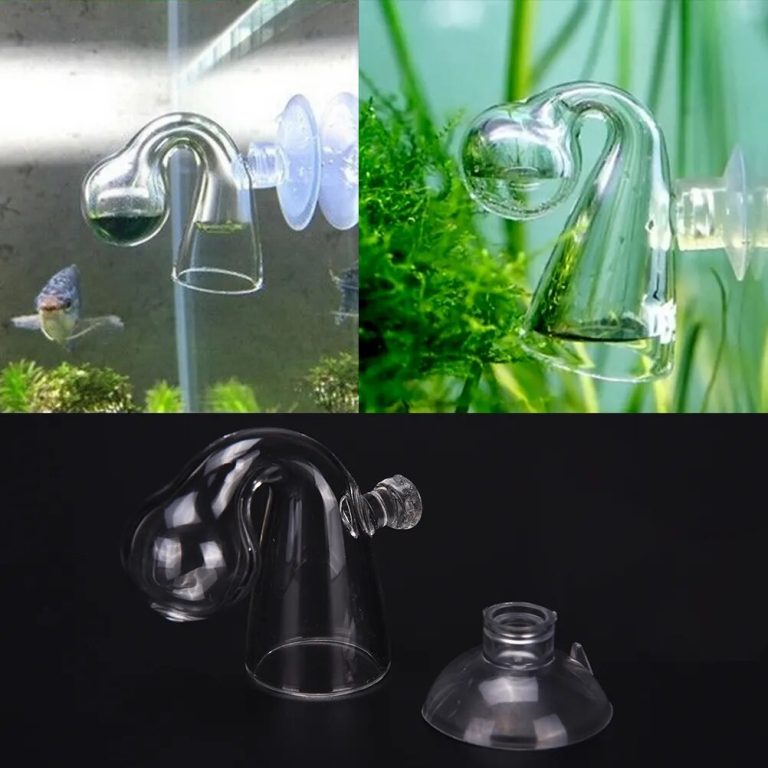Why is My Fish Tank Foaming? Solving the Mystery of Bubbly Aquariums.
Your fish tank may be foaming due to excess protein and contaminants in the water. This can cause harm to your fish and plants in the tank.
A foaming fish tank can be a frustrating and concerning issue for any fish owner. If you notice foam on the surface of your tank, it could be a sign of excess protein and contaminants in the water. This can be harmful to your fish and plants, making it essential to address the issue as soon as possible.
Understanding the causes of foaming can help you prevent it from happening, keeping your fish tank healthy and thriving. In this article, we’ll look at the common causes of foaming in fish tanks and what you can do to fix the problem.

Credit: www.reddit.com
Why Is My Fish Tank Foaming?
It’s never a good sign to see your fish tank filled with bubbles and foam. The sight of a bubbly aquarium can be worrisome because you’re not completely sure why it’s happening. Fear not, we’re here to help solve the mystery of bubbly aquariums!
Possible Causes Of Foaming
Foaming in a fish tank can be caused by several factors, including:
- Protein build-up: When excess food gets decomposed, it can form protein that leads to foam.
- Poor water quality: Too much organic matter in the water such as waste, uneaten food, and decaying plants can cause foam.
- Poor aeration: When the water lacks oxygen, it creates a thicker surface which can trap bubbles.
- Overuse of chemicals: Overdosing chemicals such as nitrates, carbon dioxide, and phosphates can cause bubbles.
The Negative Effects Of Foaming On Fish And Plants
Foaming can have serious implications for your fish and plants:
- Reduced oxygen levels: The foam reduces the exchange of gases in the water, leading to low oxygen levels which threatens the health of your aquatic pets and plants.
- Restricted light: The bubbles can block the light from reaching the lower levels, inhibiting photosynthesis in plants.
- Algae growth: The protein build-up in the foam promotes the growth of unsightly algae.
- Unsightly appearance: The excess bubbles and foam in the tank can ruin the aesthetic appeal of your aquarium.
Solving The Mystery Of Bubbly Aquariums
Thankfully, there are several ways to reduce or eliminate the foaming in your fish tank:
- Regularly clean your tank: Regular cleaning, water changes and proper filtration removes the excess waste and proteins, preventing foam from forming.
- Proper aeration: Make sure that there is enough oxygen in the water by using an air pump or proper water flow.
- Add surface skimming equipment: This equipment helps in removing the bubbles and foam from the surface of the water.
- Check water quality: Make sure that the water is properly balanced to provide a healthy environment for your fish and plants.
A bubbly aquarium can be stressful to deal with, but by understanding the causes of foaming and utilizing proper preventive measures, you can maintain a healthy environment for your aquatic pets and plants.
The Importance Of Proper Water Chemistry
The Role Of Water Chemistry In Preventing Foaming
When it comes to fish tanks, one common issue many owners face is the problem of foaming. While it may seem harmless, foaming can be a sign of an underlying issue with your aquarium’s water chemistry. Understanding the role of water chemistry in preventing foaming is crucial for maintaining a healthy and happy fish tank.
Understanding The Water Ph Level, Temperature, And Nitrate Level
The ph level of your aquarium plays a vital role in keeping foam at bay. The ideal ph level for most aquarium fish is between 6. 5 and 7. 5, but different species may require varying ranges. Keeping the ph level stable through proper maintenance and regular water changes can reduce foaming.
In addition to ph, temperature and nitrate levels can also affect water chemistry. As a general rule, the ideal temperature for most freshwater aquarium fish is between 76°f and 80°f. High nitrate levels can cause foaming and lead to algae growth.
Regular water changes and proper filtration can reduce nitrate buildup.
Maintaining The Ideal Water Conditions For Your Fish
When it comes to preventing foaming in your fish tank, maintaining the ideal water conditions is key. Here are some tips for keeping your aquarium’s water chemistry in check:
- Test your water regularly to monitor the ph, temperature, and nitrate levels.
- Avoid overstocking your fish tank, as too many fish can lead to excess waste and nutrient buildup.
- Provide adequate filtration to remove waste and debris from the water.
- Conduct regular water changes, replacing roughly 10% to 20% of the tank’s water every one to two weeks.
- Choose the right type of fish for your aquarium’s water conditions, as different species have varying ph and temperature requirements.
By following these guidelines and understanding the role of water chemistry in preventing foaming, you can keep your fish tank healthy and happy for years to come.
How To Address Foaming In Your Fish Tank
Why Is My Fish Tank Foaming?
Have you noticed an unusual foam on the surface of your fish tank lately? Although some bubble formation is natural, excessive foaming can be indicative of a more serious underlying problem. Understanding the root cause and proper ways to address fish tank foaming is essential for the health and well-being of your aquatic pets.
Choosing The Right Aquarium Filter
An aquarium filter serves as the backbone of your fish tank’s overall health. Here are some key points to keep in mind when choosing the right filtration system for your aquarium.
- Opt for a filter that is suitable for your tank size and the number of fish you have.
- Consider the type of filter (such as a canister, power, or sponge filter) based on your budget and your fish’s requirements.
- Look for a filter that can handle biological, mechanical, and chemical filtration processes to ensure that your tank water is free from impurities.
- Check the quality of the filter media and ensure they are replaced or cleaned regularly.
Tips For Preventing And Eliminating Foaming
Prevention is better than cure when it comes to fish tank foaming. Here are some tips that will help you prevent foam buildup in your aquarium.
- Avoid overfeeding your fish, as uneaten food can cause organic matter buildup in the tank water.
- Avoid water evaporation by keeping a lid on the fish tank. This will also help prevent any harmful chemicals or substances from entering the tank water.
- Check your water ph levels and make sure that they’re within the recommended range for your fish.
- Avoid using detergent or soap when washing the fish tank and its accessories.
- Monitor the water temperature and keep your fish tank away from direct sunlight, which can cause algae growth and contribute to foam buildup.
If you’ve already noticed excessive foaming in your fish tank, here are some ways to eliminate it.
- Do a partial water change (about 20-30%) to reduce the organic matter buildup in the tank water.
- Use a protein skimmer to remove the foam and impurities from the water surface.
- Increase the aeration and circulation in the fish tank by adding air stones or adjusting the water flow of the filter.
Regular Tank Maintenance Activities
Maintaining your fish tank regularly is essential to ensure your fish stay healthy and happy. Here are some key points to keep in mind when maintaining your fish tank.
- Test your water parameters regularly to ensure that they’re within the recommended range for your fish.
- Clean the aquarium glass and decorations regularly to prevent the buildup of algae and other impurities.
- Vacuum the gravel and substrate of your fish tank during water changes to remove any uneaten food, feces, and other debris.
- Replace or clean the filter media as and when required.
- Conduct regular partial water changes (about 20-30%) to remove the organic matter buildup and replenish the tank water with fresh, clean water.
Fish tank foaming can be indicative of an underlying problem and should not be ignored. By following the tips and guidelines mentioned above, you can take the necessary steps to prevent and address foam buildup in your fish tank. Regular tank maintenance, proper filtration, and responsible fish feeding habits are essential for the overall health and well-being of your aquatic pets.
The Risk Of Overcrowding
Why Is My Fish Tank Foaming: The Risk Of Overcrowding
Are you experiencing foam formation in your fish tank and wondering what’s causing it? One of the common reasons is overcrowding. Having too many fish in a confined space can lead to a variety of issues that affect your aquarium’s health and the well-being of its inhabitants.
In this section, we explore the effects of overcrowding, experienced consequences, and possible solutions in managing your tank’s population.
The Effects Of Overpopulating Your Fish Tank
Overcrowding can cause several adverse effects in your tank, including:
- Insufficient space for fish to swim and grow leads to stunted fish, which have a reduced lifespan and are more susceptible to disease.
- The accumulated waste from too many fish in a confined space creates high levels of ammonia and nitrate, which are toxic to fish.
- Inadequate oxygen supply due to reduced swimming space and excessive waste degrades water quality, leading to oxygen depletion, which suffocates your fish.
- Increased bacterial and fungal growth, caused by the high amount of uneaten food particles that reside in the tank.
Experienced Consequences Of Overcrowding
If left unchecked, overcrowding can lead to fish stress, illness, and even death. Some of the consequences of overcrowding include:
- Poor water quality, leading to fish suffering from swim bladder problems or fin rot, as well as fungal and bacterial infections.
- Aggressive behavior, caused by stress and anxiety, leading to increased violence among fish and sometimes death.
- Overcrowding makes it difficult for fish to breathe, leading to respiratory complications.
Possible Solutions For Overcrowded Tanks
If you suspect that your tank is overcrowded, there are several solutions to alleviate the problem and maintain the well-being of your fish:
- Invest in a larger aquarium to provide more space for your fish to swim and grow.
- If a bigger tank isn’t an option, consider redistributing some of your fish to other aquariums.
- Monitor feeding and avoid overfeeding which leads to excess food in the tank.
- Regular cleaning and filtering of the aquarium to maintain water quality and to eliminate waste build-up.
- Adding live plants to the tank helps to regulate water quality and reduce harmful toxins.
Overcrowding is a significant risk factor in fish tanks that can lead to various health problems and even death to your fish. To avoid such consequences, maintain suitable water conditions and manage the number of fish in your aquarium. Remember to keep an eye on your fish’s behavior and adjust as necessary.
Frequently Asked Questions On Why Is My Fish Tank Foaming
Why Is My Fish Tank Foaming?
Foaming in a fish tank can be caused by a variety of reasons, such as overfeeding, soap residue, or the bacterial bloom. It can be harmful to fish, so it’s essential to determine the cause and fix it promptly.
Is Foam Harmful To Fish And Plants?
Yes, foam can be harmful to fish and plants as it often indicates that there’s something wrong with the water chemistry. It can cause stress to the fish and damage their gills. Plants may also wilt or die due to stress from the foam.
Can I Use A Detergent To Clean The Tank?
No, you should never use household detergents or chemicals to clean the fish tank as they can harm the fish. Instead, use a designated aquarium cleaner and follow the manufacturer’s instructions carefully.
How Can I Prevent Foaming In My Fish Tank?
To prevent foaming, feed your fish in moderation, maintain a regular cleaning routine, and avoid overcrowding the tank. Ensure that there’s enough aeration and filtration in the tank, and use a water conditioner to help neutralize chemicals in the water.
Conclusion
Now that we have analyzed the different factors that could make your fish tank foam, you can take necessary steps to rectify the situation. By properly maintaining your aquarium by changing the water and cleaning the tank regularly, avoiding overfeeding, and selecting compatible fish species, you can prevent your fish tank water from foaming.
Keep in mind that the quality of water in your fish tank is essential for keeping your fish healthy and happy. If the foam persists, it’s advisable to seek the advice of a certified fish expert who can diagnose and prescribe the right treatment.
Maintaining a healthy and clean aquarium will keep your fish tank from foaming, eliminate harmful bacteria, and promote a conducive environment for your fish to thrive. So go ahead, give your fish a healthy environment that they deserve, and watch them grow and flourish!





